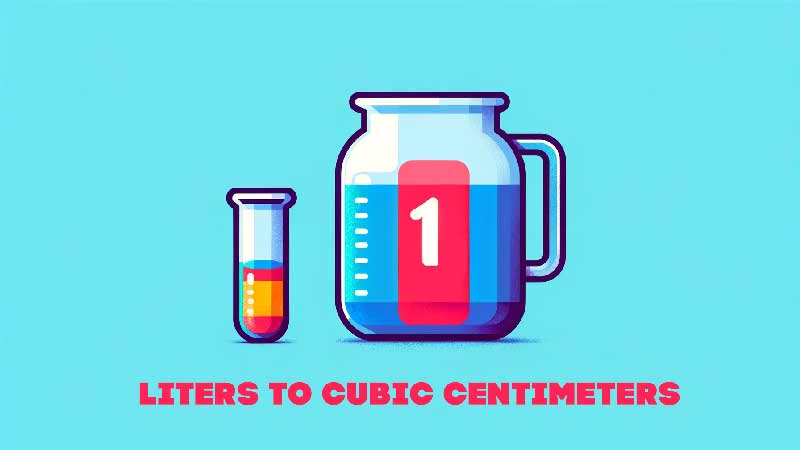Our Liters to Cubic Centimeters Calculator is a practical tool designed to convert volumes between liters (L) and cubic centimeters (cm³). This calculator serves as an efficient and quick solution for students, professionals, and anyone needing to perform these conversions.
Liters to Cubic Centimeters Calculator
Convert liters to cubic centimeters and vice versa.
How to Use the Calculator
Using the calculator is straightforward:
- For Liters to Cubic Centimeters: Enter the volume in liters in the first input field. The calculator will automatically display the equivalent volume in cubic centimeters in the second field.
- For Cubic Centimeters to Liters: If you need to convert in the opposite direction, input the volume in cubic centimeters in the second field. The corresponding volume in liters will be displayed in the first field.
The calculator features editable fields, allowing reverse calculations and seamless volume conversions.
Understanding the Conversion
The formula used for the conversion is simple:
1 liter (L) = 1,000 cubic centimeters (cm³)
This relationship is based on the metric system, where a cubic centimeter is defined as a cube with sides of 1 centimeter in length, and a liter is equal to 1,000 cubic centimeters.
Pre-calculated Conversion Values
| Liters (L) | Cubic Centimeters (cm³) |
|---|---|
| 0.5 | 500 |
| 1 | 1,000 |
| 2 | 2,000 |
| 3 | 3,000 |
| 5 | 5,000 |
| 10 | 10,000 |
| 20 | 20,000 |
| 50 | 50,000 |
| 100 | 100,000 |
A Splash of Knowledge: The Metric System
Delve into the fascinating history of the metric system! Introduced during the French Revolution, the metric system aimed to unify and simplify measurements. It has evolved into the International System of Units (SI), becoming the global standard for scientific and commercial measurements. This system’s adoption marked a significant shift from traditional units like feet and gallons to a more universal and logical approach based on multiples of ten.
Understanding liters and cubic centimeters offers a glimpse into this revolutionary metric system, showcasing its precision, universality, and ease of use. Whether in a lab, a classroom, or everyday life, these units play a crucial role in measurement and understanding our world.









Leave A Comment